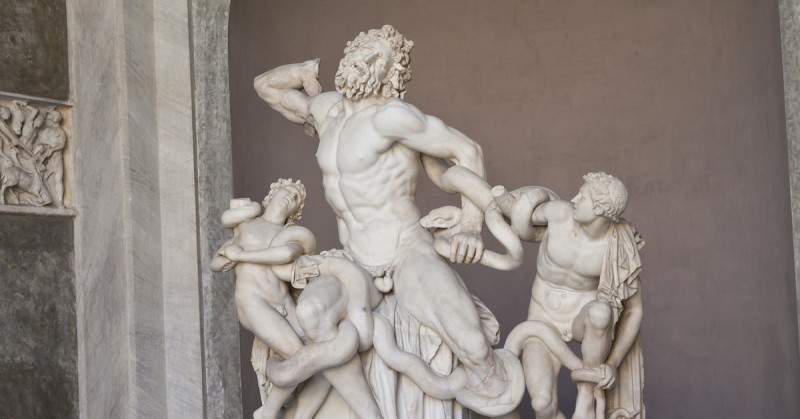
Reframing is taking old information and warping it to see things from a new perspective. This changes the way you feel about something and leads to new decisions. It also helps with creative problem solving, but it’s most useful when marketing something old to a new generation. We can see examples of this throughout history in art, music and even businesses.
Art flourishes across civilizations in waves and motions. It lives and dies like a blooming flower and continues to live on as scattered seeds of culture planted in the tilled grooves of our minds. These scattered seeds mix and consort, becoming gardens of communities. Communities that have their own art, their own music, and their own movement. Every era has a movement, a period of time where there is a huge shift in culture, arts, and science. In the late 1800’s, there was Art Nouveau. The 1500’s had the Renaissance. But the one I want to focus on goes further back. The Hellenistic Period. (323 BC)
The Hellenistic Period began after Alexander the Great and was a reaction to his conquests. You see, the goal of the movement was to spread the Classical Greek culture to conquered nations to showcase superiority. Grecian influence began mixing with local cultures, which produced a variety of styles and subjects. But the most interesting part of Hellenism was the statues.
Statues were carved with a twisting action and a contrapposto pose (where the figure’s centre of gravity rests on one leg.) This was never done before. The combination of contrapposto and twisting the form allowed the Greeks to create more dynamic works. Bringing dead stone figures to life. but it also allowed them to do something completely unexpected.
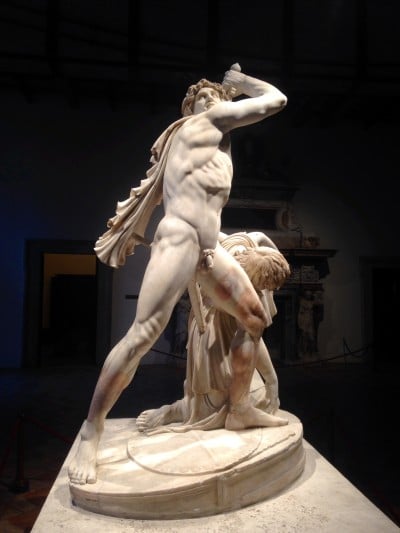 Imagine you’re sitting in the shade of an umbrella sipping a cup of café despite the burning heat. Rome. It wasn’t built in a day. With weather like this, who could blame them. You drain the cup and pay the bill. You’re on vacation, and you find yourself touring for air conditioning instead of the sights. Pulling out a map from your bag, your finger peruses past the coliseum, the Vatican, and the Trevi Fountain. “Please, something indoors.” You hope. Then, your finger stops. — Standing at the top steps of the National Roman Museum. You sigh a humid breath before sauntering through the door. You feel a rush of cool air, sweat freezing against your skin “Aaaaah…” relief. You stand in the foyer of the museum before the feeling of being watched creeps in. Better pretend you’re here to see the exhibits. You start going through the motions of a museum. Walk from one room to the next, Standing in the centre of the room. A statue of a man drawing his sword. You stare in awe at the muscular detail as you approach. A plaque separates you and the warrior. You have to know who this is. You lean forward and begin reading.
Imagine you’re sitting in the shade of an umbrella sipping a cup of café despite the burning heat. Rome. It wasn’t built in a day. With weather like this, who could blame them. You drain the cup and pay the bill. You’re on vacation, and you find yourself touring for air conditioning instead of the sights. Pulling out a map from your bag, your finger peruses past the coliseum, the Vatican, and the Trevi Fountain. “Please, something indoors.” You hope. Then, your finger stops. — Standing at the top steps of the National Roman Museum. You sigh a humid breath before sauntering through the door. You feel a rush of cool air, sweat freezing against your skin “Aaaaah…” relief. You stand in the foyer of the museum before the feeling of being watched creeps in. Better pretend you’re here to see the exhibits. You start going through the motions of a museum. Walk from one room to the next, Standing in the centre of the room. A statue of a man drawing his sword. You stare in awe at the muscular detail as you approach. A plaque separates you and the warrior. You have to know who this is. You lean forward and begin reading.
“This is the ‘Ludovisi Gaul’ a very famous example of Hellenistic art. Notice the twist in the torso and shifting of his weight. What does this statue’s pose tell you?
I’ll tell you what I see. A hero drawing his sword, ready to battle evil, while a sobbing maiden throws herself at his feet, seeking protection and mercy. The elaborate pose and details paint a story inside your mind.
Let me show you what happens when you walk around the Gaul.
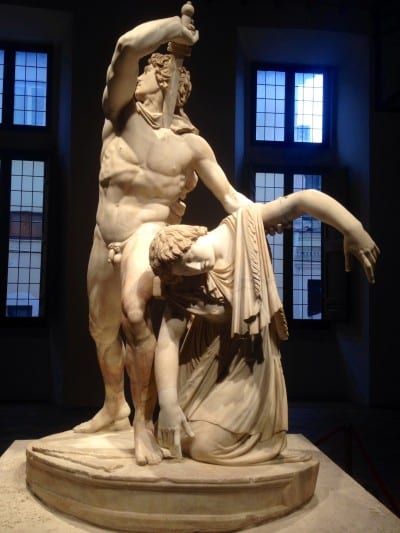 Look closely, what does his pose tell you now? The Ludovisi Gaul has a second name. “The Galatian Suicide.” The true tale behind this statue is of a Celt who kills his wife, and while holding her lifeless body plunges his sword into his chest.”
Look closely, what does his pose tell you now? The Ludovisi Gaul has a second name. “The Galatian Suicide.” The true tale behind this statue is of a Celt who kills his wife, and while holding her lifeless body plunges his sword into his chest.”
You stare at the Galatian man. You see the way the body contorts to keep the details underwater until, through your own eyes, a tragedy unfolds. A once brave warrior reduced to cowardice. A single tear runs down your cheek, you can’t help but feel moved. — “Thank you, have a nice day.” Says the accented cashier as you leave the gift shop with a book on Greek statues.
Utilizing twists and contrapposto, Grecian artists reframed your perception in an instant. The story and conclusions you drew up before are erased and replaced with new ones, right? This is what makes Hellenistic art so special.
The Greeks discovered when you take old information and give it a twist it changes our perspective and the way we feel about something, which results in new ideas or new decisions. A statue like this was especially effective for smothering the flames of hope and open rebellion in a conquered city. A once brave Celt, now a monster and a coward.
Ancient Greece’s use of reframing may be an archaic example, but it is a powerful one. Because even after the ancient Greeks vanished, the seeds of Hellenism lives on throughout history, growing new gardens in the Renaissance and Art Nouveau’s periods, blossoming in works like Michelangelo’s David (1504) and Alphonse Mucha’s The Slav Epic (1928). We continue to take old information (Hellenism) and twist it, forming new ways of looking at ourselves. Just look at these examples below of art from different periods. All the images use contrapposto. You can tell by the distinct “s” shape the body makes when weight is being transferred, but the subjects are reframed to reflect the current culture, people and technologies of that time.
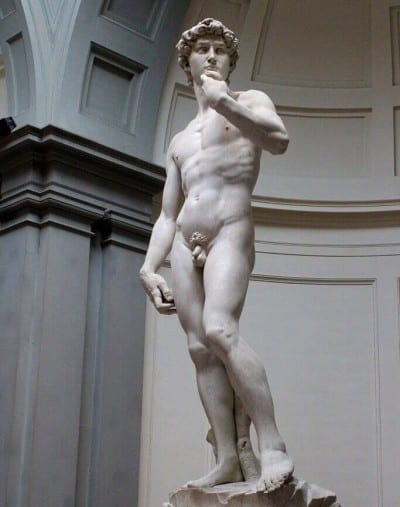
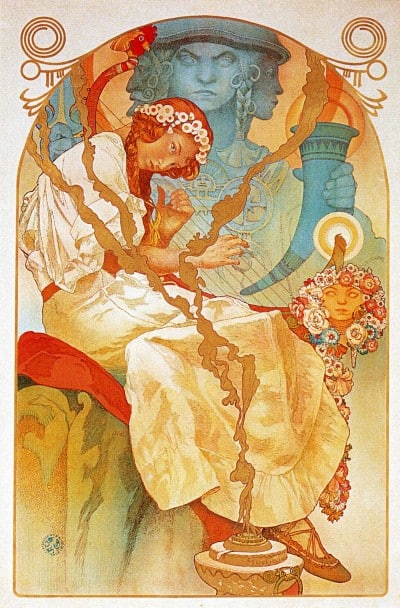

Visual Art isn’t the only thing that has gotten reframed throughout history. Blues became Rock n’ Roll. Hell, Play-Doh was a product designed to clean soot off your wallpapers. But when it wasn’t needed anymore they reframed it as a toy for children and it was a success! When you reframe old information you open yourself up to a new market and can speak across generations.
- Love Letter to the Forgotten: Intimacy of Analog - January 1, 2024
- I Hate a Roman Named Status Quo! - December 6, 2023
- Vincent Van Gogh, Torture of Belief. - April 21, 2023
